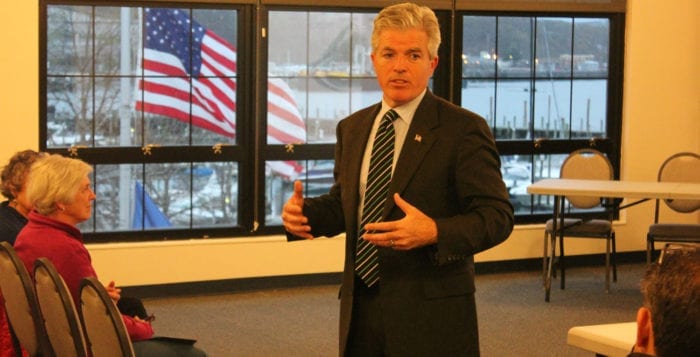By Victoria Espinoza
The Village of Asharoken government is looking to stay the course, as two incumbents on the village board are running for another term to serve their community.
Deputy Mayor Mary (Pam) Pierce and Trustee Ian Jablonski announced this week they will be running for re-election in the Asharoken village election June 20, seeking a fourth and third term, respectively. Both are members of the Asharoken Integrity Party.
Pierce, a 32-year Asharoken resident, is a retired business executive and owner and has served as deputy mayor for five years. She was the coordinator on the Village Response for the ASDRP beach project and oversaw the repair of the Sound-side groins at both the eastern and western ends and the National Grid sand placement in the fall of last year.
“We’ve been doing a lot and it’s been very rewarding serving the community,” Pierce said in a phone interview. “This is a great little community, and it’s great to get as many projects done as we can for the future of our village.”
Jablonski, a 16-year Asharoken resident, is a director in the information technology department of Northwell Health. He managed the widening of the shoulder on Asharoken Avenue across from the seawall, the repair of a retaining wall northwest of that area and has kept the board apprised of deer, tick and hunting information during his tenure. In the past two years residents have been divided on how to handle the overpopulation of deer in the area, and the resolution of allowing bow hunting for deer.
During the last five years, the pair said the Asharoken administration has concentrated on four main areas: taxes, infrastructure, grant funding and intermunicipal cooperation/planning.
In each of the last five years the village has remained below the New York State-mandated 2 percent tax levy increase cap. The recently adopted 2017-2018 budget has a 0 percent increase for the second year in a row. The five-year average tax change is the lowest it has been since 2002, at 1.4 percent. In addition, the New York State comptroller has conducted financial stress tests for local governments in the last four years, and Asharoken received the best evaluation possible for all three tests.
Another project that the pair was proud to have played a role in accomplishing was the construction of the new village hall, which was achieved entirely through resident donations. The current administration has also worked on repaving and repairing streets, repairing parts of the seawall and other parts of the beach. The village has also added four part-time police officers and replaced aging police cars to improve security in the area.
According to Jablonski and Pierce, approximately $1,100,00 in federal, state and local support has been secured by the administration in the last five years, which helped substantially defray the costs of many infrastructure projects.
The incumbents also said the village negotiated a five-year police contract that freezes the pay scale for new officers for five years and requires new officers to contribute 15 percent of their health insurance costs, instituted single stream recycling which has reduced sanitation costs for the village by approximately $2,500 annually, and created a multi-agency plan to effectively deal with storms like Hurricane Sandy, which caused major damage to the village five years ago.
Pierce and Jablonksi said in a joint statement they’ve enjoyed the collaborative efforts that make Asharoken so successful.
“It has been very rewarding working with the wonderful team we have-our fellow trustees and the mayor, the village employees and the many volunteers and residents who give so much to our beautiful village,” they said. “While much has been accomplished in the past five years, there are still important challenges and issues ahead. We’ll continue to work with the help of the community for the best solutions for all of Asharoken.”

































